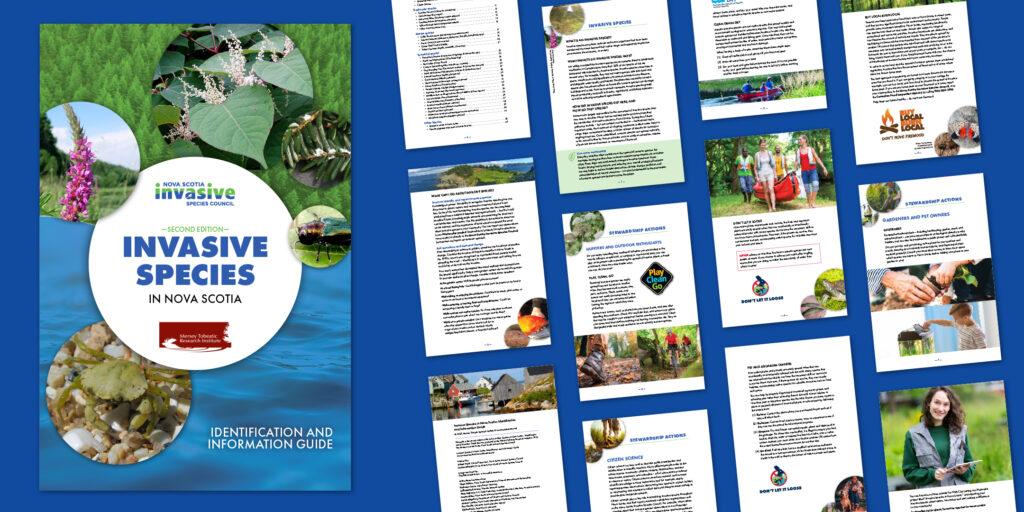VASCULAR PLANT Phalaris arundinacea Description Reed Canary Grass is a cool season, perennial grass that grows up to 1.7 m tall. Its leaf blades are flat, 30–120 cm long, 1.9 […]
Invasive species are plants, animals and micro-organisms that have been introduced into areas beyond their native range and negatively impact the environment, the economy, or society.
It is widely accepted that invasive species are an immense threat to biodiversity worldwide. In Canada alone, more than 20% of our species at risk are threatened with extinction by invasive species. Invasive species cause harm in several ways. For example, they may eat native species, take their food and space, contribute to soil degradation and erosion, introduce new diseases, and degrade water quality and habitat. The destruction caused by invasive species also has adverse effects on human life. Invasive species can damage buildings and roads. From an economic viewpoint, invasive species greatly impact productivity and profit in forestry, agricultural, and fishing industries – as well as reducing recreational opportunities.
Humans are largely responsible for the movement of invasive species from one area to another. Many human-assisted pathways have permitted the introduction of invasive species in Nova Scotia. Examples of these pathways include – but are certainly not limited to – horticultural trade, aquarium trade, the movement of shipping containers, ballast water tanks in cargo ships, recreational boating, and the release of species for hunting or angling purposes. Once established, invasive species can spread naturally, or be moved further by human activities such as outdoor recreation, release of pets into the environment, or movement of firewood.
Everyday activities often contribute to the spread of invasive species. For example, buying products from overseas requires transportation via container ships; those ships may inadvertently transport invasive species to Nova Scotia. Buying local products and reducing your overall ecological footprint not only helps to reduce habitat destruction, climate change, pollution, and overexploitation of natural resources – it is also fundamental for the prevention of invasive species introductions across the globe.

VASCULAR PLANT Phalaris arundinacea Description Reed Canary Grass is a cool season, perennial grass that grows up to 1.7 m tall. Its leaf blades are flat, 30–120 cm long, 1.9 […]
VASCULAR PLANT Rosa rugosa Description Rugosa Rose is a dense shrub that grows up to 2.5 m tall. Its stem is robust, with abundant thorns of all sizes. Twigs are […]
VASCULAR PLANT Cytisus scoparius Description Scotch Broom is a woody, perennial shrub in the pea family (Fabaceae) that grows upright in dense, brushy thickets. It typically reaches 1-3 m in […]
VASCULAR PLANT Pinus sylvestris | Other Names: Scots Pine, Caledonian Pine Description Scotch Pines are large, evergreen, coniferous trees that can grow up to 25 m tall, and have an […]
FRESHWATER FISH Micropterus dolomieu | Other Names: Smallie, Brown Bass, Black Bass Description Smallmouth Bass have a robust, brown-green body with a white belly. They have dark vertical bars on […]
MARINE ANIMAL Styela, Ascidiella, Ciona Spp. | Other Name: Sea Squirt Description Solitary Tunicates are small marine filter-feeding animals, sometimes referred to as sea squirts. They look somewhat like fingers, […]
MARINE ANIMAL Ciona, Botryllus, & Botrylloides spp. | Other Name: Sea Squirt Description Small marine, filter-feeding animals, sometimes referred to as sea squirts, live attached to underwater objects. Some, like […]
FUNGUS Pseudogymnoascus destructans Description Pseudogymnoascus destructans is a fungal pathogen that causes the disease known as White-Nose Syndrome. This disease is characterized by a white fungus that grows on a […]
VASCULAR PLANT Pastinaca sativa Description Wild Parsnip is a tall herbaceous plant in the carrot/parsley family (Apiaceae) that can live for two or more years. When it flowers, it typically […]